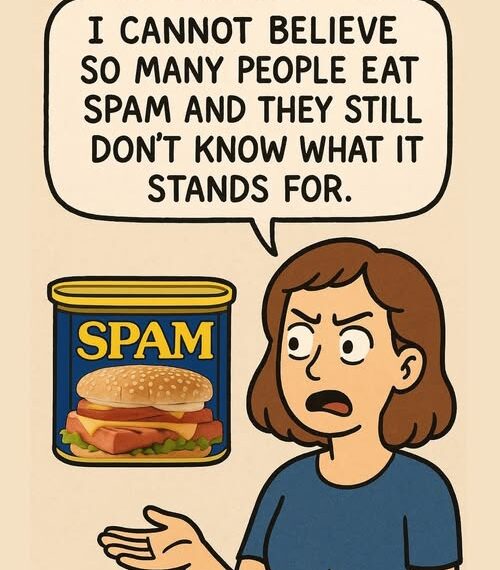SPAM’s production process is straightforward and designed for efficiency:
- Grinding – The pork and ham are ground and mixed.
- Blending – Other ingredients like salt, sugar, and starch are added.
- Canning – The mixture is packed into cans.
- Cooking – The cans are sealed and cooked under pressure (retort process) to ensure sterility.
- Cooling and Labeling – The cans are cooled and labeled for distribution.
Thanks to this method, SPAM can last 2–5 years unopened on the shelf—ideal for military use, emergencies, and travel.
🌍 A Global Icon
Though SPAM originated in the U.S., its influence is global:
- Hawaii: SPAM is beloved in Hawaiian cuisine. SPAM musubi (grilled SPAM on rice wrapped in seaweed) is a staple snack.
- South Korea: SPAM is considered a luxury gift item and is often given in boxed sets during holidays.
- Philippines: It’s eaten for breakfast with rice and eggs.
- Guam: The country has the highest per capita SPAM consumption in the world.
🧠 Is SPAM Healthy?
SPAM is high in sodium, saturated fat, and calories, so it should be eaten in moderation:
- One serving (2 ounces) contains:
- 180 calories
- 16 grams of fat
- 7 grams of protein
- 790 mg of sodium (about 33% of the daily recommended intake)
While it’s not a health food, SPAM can be part of a balanced diet when consumed occasionally and paired with vegetables and whole grains.
✅ Fun Facts About SPAM
- More than 8 billion cans of SPAM have been sold since 1937.
- SPAM was heavily used in World War II to feed Allied troops.
- There’s a SPAM Museum in Austin, Minnesota.
- Monty Python’s famous “SPAM” sketch gave rise to the term “spam” for unwanted email.
🔚 Conclusion
SPAM may be the butt of jokes, but it’s also a historic, adaptable, and culturally significant food product. With only a few ingredients and a long shelf life, it has fed millions across the world. Whether you enjoy it fried with eggs, in sushi, or as part of a stir-fry, SPAM has proven to be far more than just a canned curiosity.




